According to the director of the Federal Maritime and Federal Zone (ZOFEMAT), Adrian Medina, Playa del Carmen’s beaches are free of sargassum.
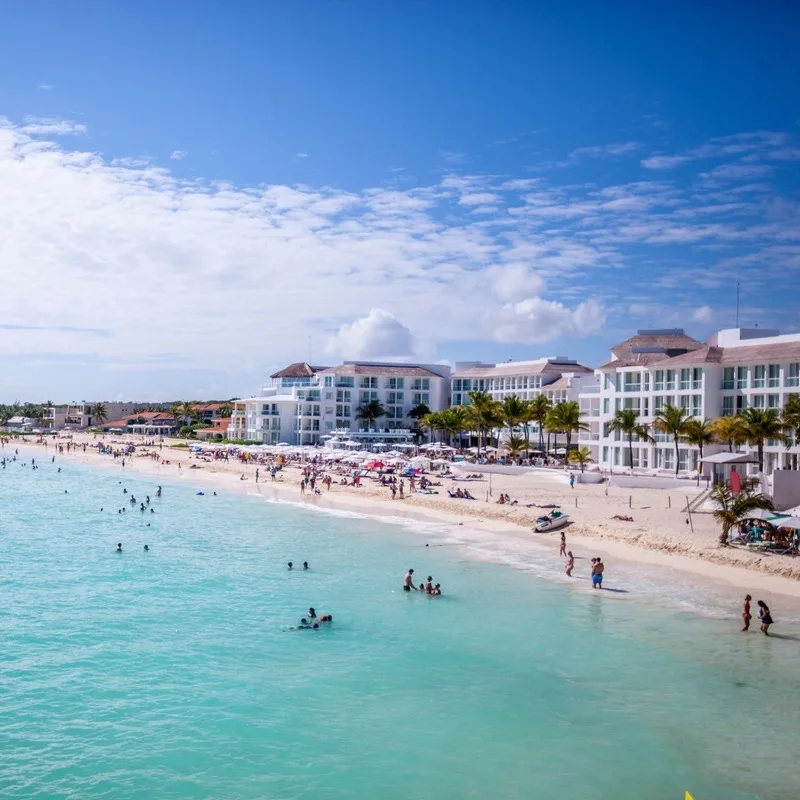
He claims that the beaches are in their optimal state ahead of the Navy’s construction of the anti-sargassum net installation.
While waiting for the nets to be completed, ZOFEMAT removed around 17 thousand tons of sargassum throughout 2023.
Medina assures that ZOFEMAT will protect Mexican Caribbean beaches from sargassum pollution and erosion.
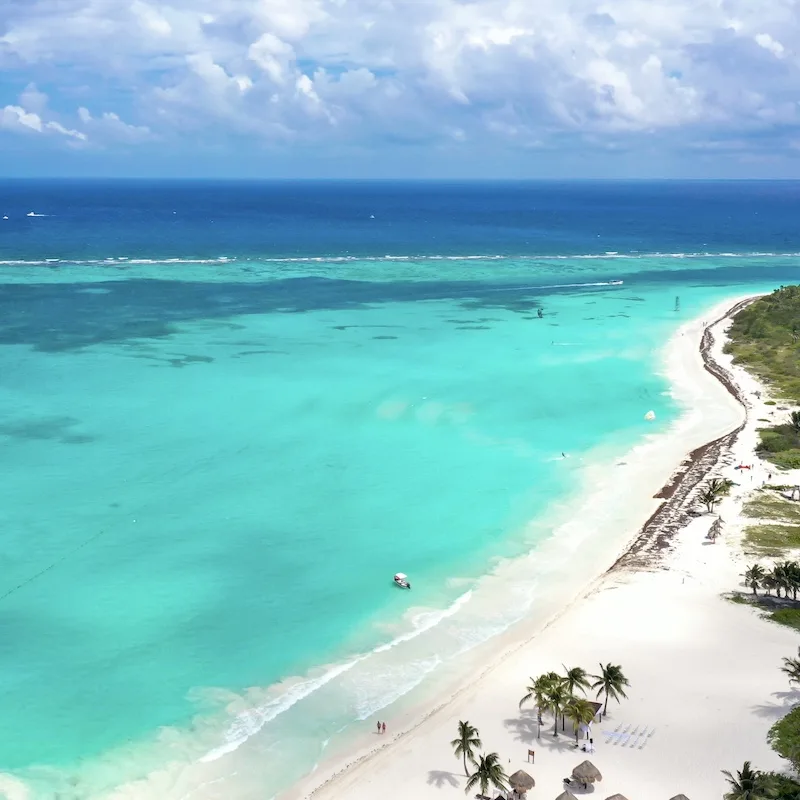
What Is Sargassum?
Riviera Maya travelers may see sargassum making headlines when they research their destination.
In recent years, the species of seaweed has been a significant headache for travelers and local authorities alike.
Sargassum is a seaweed often washed onto beaches in the Gulf of Mexico, including those in the Mexican Caribbean.
Sargassum differs from other species of seaweed in one fundamental way. It does not attach to the ocean floor.
Top 5 Travel Insurance Plans For 2023 Starting At $10 Per Week
Easily Earn Points For Free Travel
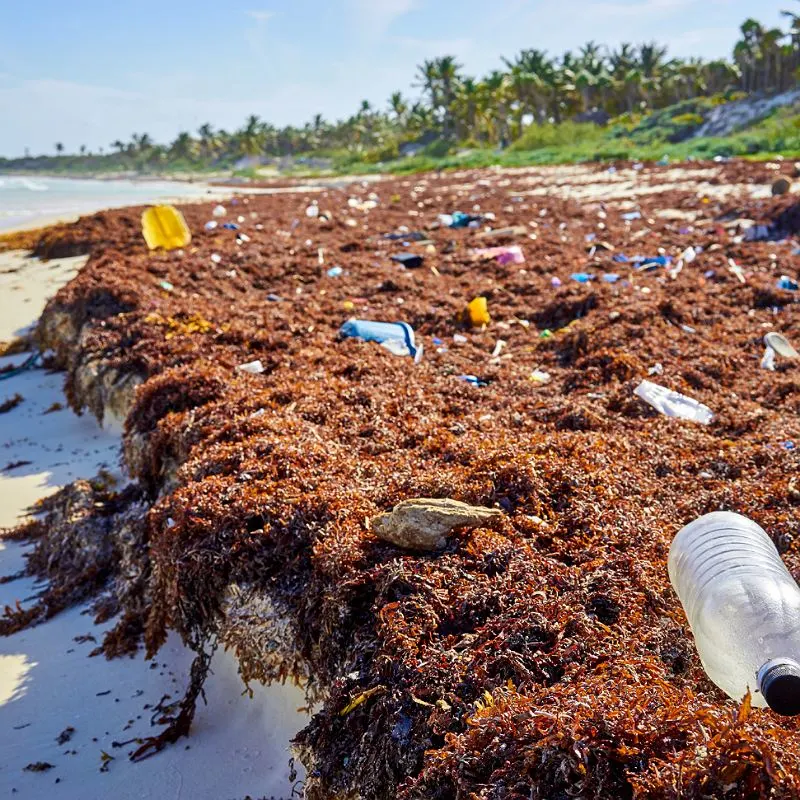
While other seaweeds stay latched to one specific location, sargassum floats freely through the open ocean, floating along with the currents.
Despite problems that arise from too much sargassum, this seaweed is vital to the Caribbean ecosystem. It is an essential source of food, refuge, and breeding grounds for many species of marine life.
For example, the “sargassum fish” spends its entire life hidden beneath patches of sargassum.
Why is there so much Sargassum in the Caribbean?
Not long ago, sargassum was a minor problem in the Mexican Caribbean. Like other forms of seaweed, it would occasionally wash up on beaches, but authorities had little trouble controlling it and keeping beaches clean.
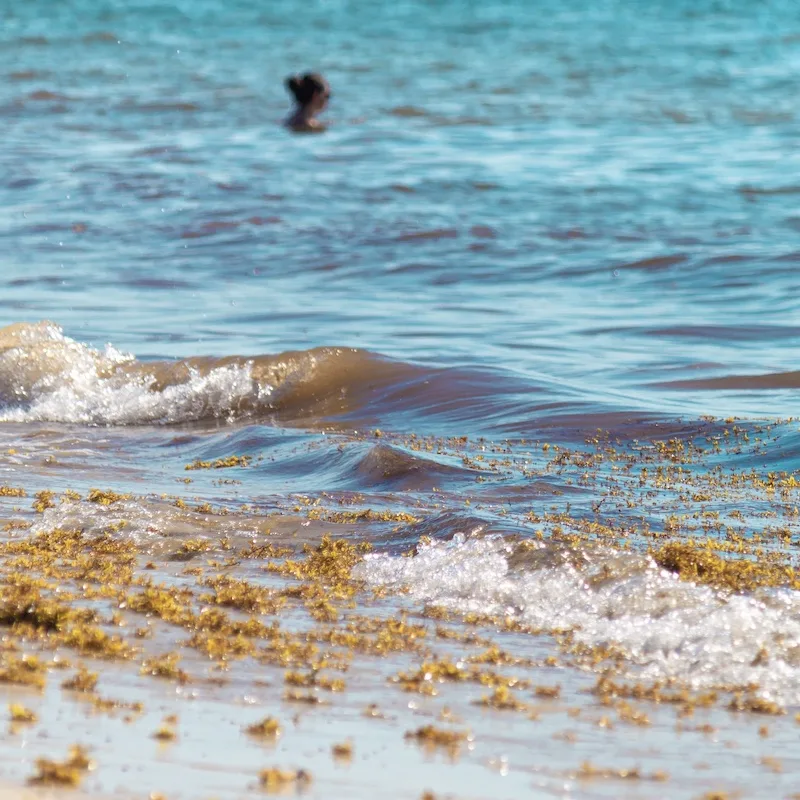
In 2011, however, scientists noticed abnormally large sargassum blooms in the Atlantic.
This was not an isolated event or a particularly bad year. Instead, the last decade has produced larger and larger sargassum patches.
Today, satellites observe a 5,500-mile-long, ten million-ton sargassum belt in the Atlantic Ocean.
Scientists like Brian Lapointe, a research professor at Florida Atlantic University who has been studying sargassum for over 40 years, say that land pollution leads to sargassum growth in the water.
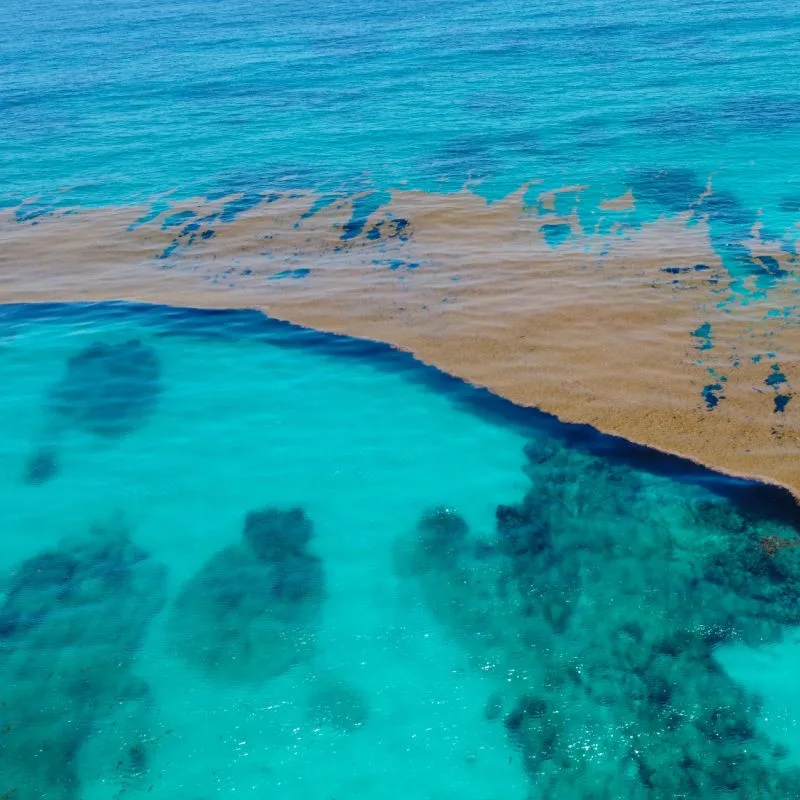
Large volumes of human and animal waste, along with agricultural fertilizers, wash into the Gulf of Mexico and the Atlantic Ocean, bringing ammonium, phosphate, and nitrate.
Usually, the natural limits of these nutrients limit sargassum’s ability to grow, but with more nutrients comes more sargassum.
“It’s almost like sargassum is a barometer for how global nitrogen levels are changing,” said Lapointe.
Long-term, the best way to solve the sargassum crisis is to address pollution on land.
The Problem
Sargassum differentiates itself from other seaweeds in another way. It releases foul-smelling gases like hydrogen sulfide once it leaves the water.
After about 48 hours on land, sargassum begins to rot, resulting in a smell resembling manure or rotten eggs, and is dangerous for those with respiratory issues.
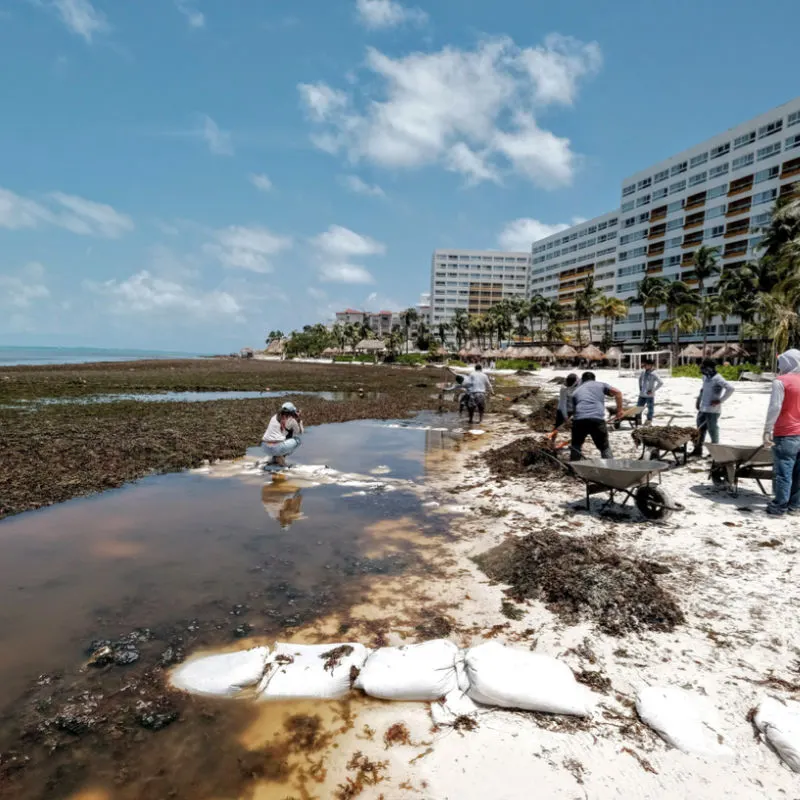
For this reason, it is essential that authorities quickly remove sargassum from beaches if they hope to attract tourists.
Anti-Sargassum Measures In The Riviera Maya
Throughout the Rivera Maya, stakeholders work hard to keep sargassum off beaches.
Sargassum nets are a standard solution to sargassum blooms. The nets are meant to keep sargassum in the water from reaching beaches in the first place.
The Mexican Navy and the Riviera Maya Hotel Association collect sargassum before it ever reaches a beach.
Nevertheless, sargassum levels are so high that ocean collection alone is not a solution.
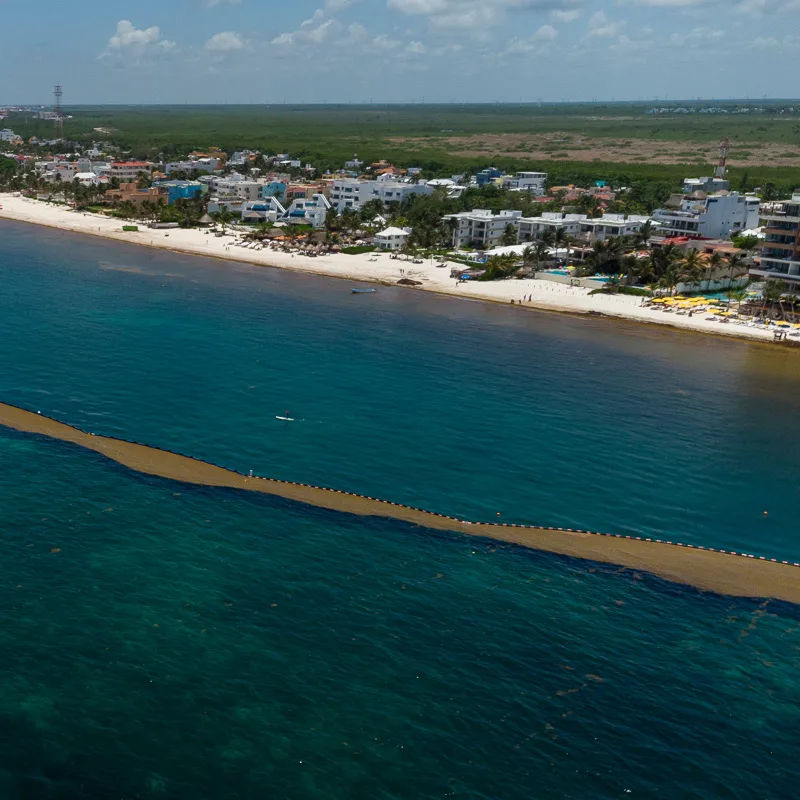
Cancun hotels and resorts are looking to gather the sargassum that gets past the nets and onto the beach and convert it into biofuel.
They hope to begin the project this year and expect to see its effects as soon as August 2024.
Chaves, head of the Riviera Maya Hotel Association, is not worried about the future of the sargassum problem, saying that the hotels “have a range of resources to fight against sargassum seaweed” and that international partnerships make financing no issue.
Plan Your Next Cancun Vacation:
Traveler Alert: Don’t Forget Travel Insurance For Your Next Trip!
Choose From Thousands of Cancun and Riviera Maya Hotels, Resorts and Hostels with Free Cancellation On Most Properties
↓ Join the community ↓
The Cancun Sun Community FB group has all the latest travel news, conversations and tourism Q&A’s for the Mexican Caribbean

Subscribe to our Latest Posts
Enter your email address to subscribe to The Cancun Sun’s latest breaking news affecting travelers, straight to your inbox.

Kim Samsel
Wednesday 31st of May 2023
Why do I feel like I'm being gaslighted here? I live in PDC. Did they think we don't have eyes 👀🤣
John
Sunday 28th of May 2023
Lol. I'm here right now and can't even go in the water.
Ron
Saturday 27th of May 2023
This is NOT TRUE. I just return from Cancun and are full of it!
L.
Saturday 27th of May 2023
@Ron,
Thanks for letting us know it's fake news. I didn't believe that article anyway.
Yanik Sevigny
Friday 26th of May 2023
This article is a lie and pure fantasy. I just got back from PDC today May 26th. The beaches are FULL of sargassum, along with a horrible smell. Don't believe this article. They are lying to you to get you there.
L.
Saturday 27th of May 2023
@Yanik Sevigny,
I felt it was a lie based on how clean that picture looks.
Frequent Traveler
Friday 26th of May 2023
Wow, what a difference two weeks makes! It was terrible during the second week of May in Playa del Carmen, and during the last week of May in Puerto Morelos.
L.
Saturday 27th of May 2023
@Frequent Traveler,
That article is fake news!! I could tell from the picture.